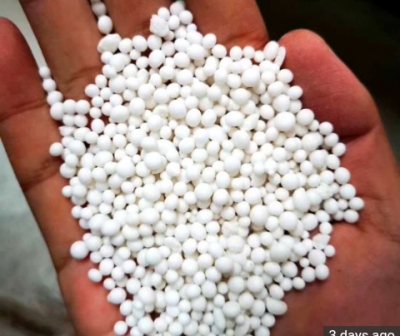profile/765820200803_1542502.jpg
Adnanpanti

About Fertilizer
~1.7 mins read
Management of soil fertility has been the preoccupation of farmers for thousands of years. Egyptians, Romans, Babylonians, and early Germans are all recorded as using minerals or manure to enhance the productivity of their farms.[1] The modern science of plant nutrition started in the 19th century and the work of German chemist Justus von Liebig, among others. John Bennet Lawes, an English entrepreneur, began to experiment on the effects of various manures on plants growing in pots in 1837, and a year or two later the experiments were extended to crops in the field. One immediate consequence was that in 1842 he patented a manure formed by treating phosphates with sulfuric acid, and thus was the first to create the artificial manure industry. In the succeeding year he enlisted the services of Joseph Henry Gilbert, with whom he carried on for more than half a century on experiments in raising crops at the Institute of Arable Crops Research.[5]
The Birkeland–Eyde process was one of the competing industrial processes in the beginning of nitrogen based fertilizer production.[6] This process was used to fix atmospheric nitrogen (N2) into nitric acid (HNO3), one of several chemical processes generally referred to as nitrogen fixation. The resultant nitric acid was then used as a source of nitrate (NO3−). A factory based on the process was built in Rjukan and Notodden in Norway, combined with the building of large hydroelectric power facilities.[7]
The 1910s and 1920s witnessed the rise of the Haber process and the Ostwald process. The Haber process produces ammonia (NH3) from methane (CH4) gas and molecular nitrogen (N2). The ammonia from the Haber process is then converted into nitric acid (HNO3) in the Ostwald process.[8] The use of synthetic nitrogen fertilizers has increased steadily in the last 50 years, rising almost 20-fold to the current rate of 100 million tonnes of nitrogen per year.[9] The development of synthetic nitrogen fertilizer has significantly supported global population growth — it has been estimated that almost half the people on the Earth are currently fed as a result of synthetic nitrogen fertilizer use.[10] The use of phosphate fertilizers has also increased from 9 million tonnes per year in 1960 to 40 million tonnes per year in 2000. A maize crop yielding 6–9 tonnes of grain per hectare (2.5 acres) requires 31–50 kilograms (68–110 lb) of phosphate fertilizer to be applied; soybean crops require about half, as 20–25 kg per hectare.[11] Yara International is the world's largest producer of nitrogen-based fertilizers
Advertisement

Link socials
Matches
Loading...
